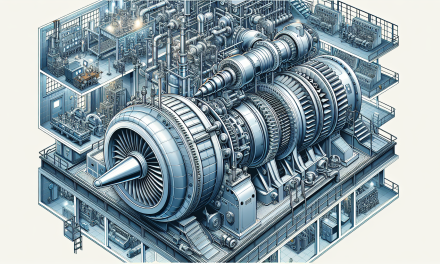Table of Contents
- 1. Introduction
- 2. What is an Energy Management System?
- 3. An Overview of BS EN 16001 and ISO 50001
- 4. Benefits of Implementing an Energy Management System
- 5. Key Steps to Developing and Implementing an Energy Management System
- 5.1 Conducting a Gap Analysis
- 5.2 Defining Energy Policies and Objectives
- 5.3 Establishing an Energy Management Team
- 5.4 Training and Awareness Programs
- 5.5 Monitoring and Review Processes
- 6. Challenges in Implementing Energy Management Systems
- 7. Conclusion
- 8. FAQs
1. Introduction
Energy management plays a critical role in today’s competitive landscape. Organizations seek effective methods to manage energy consumption, which results in reduced costs and enhanced sustainability. In this blog post, we will explore the essentials of developing and implementing an effective Energy Management System (EMS) in accordance with internationally recognized standards — BS EN 16001 and ISO 50001.
2. What is an Energy Management System?
An Energy Management System serves as a systematic approach to managing energy use in order to reduce consumption and increase efficiency. It integrates energy-related data and resources with a focus on planning, monitoring, and optimization. By implementing an EMS, organizations commit to continually improving their energy performance, ultimately leading to lower operational costs and a significant reduction in environmental impact.
3. An Overview of BS EN 16001 and ISO 50001
Both BS EN 16001 and ISO 50001 establish requirements for organizations looking to improve their energy management practices. While BS EN 16001 is specific to the European context, ISO 50001 provides a global framework. The fundamental principles of these standards include:
- Establishing an energy policy that reflects the organization’s commitment to energy efficiency.
- Identifying energy performance indicators (EnPIs) to measure progress.
- Defining objectives and action plans to achieve set targets.
- Involvement and training of employees in energy management initiatives.
4. Benefits of Implementing an Energy Management System
Implementing an Energy Management System in line with BS EN 16001 and ISO 50001 offers numerous advantages:
- Cost Savings: Organizations typically see a reduction in energy consumption, leading to significant financial savings.
- Environmental Impact: Reduced energy consumption translates to lower greenhouse gas emissions, promoting sustainability.
- Improved Efficiency: An EMS encourages organizations to identify inefficiencies and develop strategies for improvement.
- Enhanced Corporate Image: Demonstrating commitment to energy efficiency improves a company’s reputation.
5. Key Steps to Developing and Implementing an Energy Management System
The journey toward a successful Energy Management System begins with a thorough understanding of the organization’s energy usage and existing practices. Let’s explore key steps to implement an EMS effectively:
5.1 Conducting a Gap Analysis
Start by conducting a gap analysis to assess current energy management practices against the requirements of BS EN 16001 and ISO 50001. This analysis helps identify areas needing improvement and guides the development of a targeted action plan.
5.2 Defining Energy Policies and Objectives
After identifying gaps, define a clear energy policy that aligns with organizational goals. Setting specific objectives is crucial, as they provide measurable targets for energy performance.
5.3 Establishing an Energy Management Team
Creating an energy management team composed of key stakeholders is essential for successful implementation. This team typically includes members from various departments, ensuring a holistic approach to energy management.
5.4 Training and Awareness Programs
To effectively implement the EMS, training and awareness sessions for all employees, highlighting their roles in energy efficiency initiatives, are vital. Encouraging energy-conscious behavior can significantly impact overall performance.
5.5 Monitoring and Review Processes
Establish a process for monitoring energy performance using specific key performance indicators (KPIs). Regularly reviewing these metrics will allow organizations to measure progress and make necessary adjustments to meet their energy objectives.
6. Challenges in Implementing Energy Management Systems
Implementing an effective Energy Management System can be challenging. Common hurdles include employee resistance to change, insufficient training resources, and difficulties in data collection and analysis. Addressing these challenges early on proves beneficial for a smoother implementation process.
7. Conclusion
Implementing an Energy Management System based on BS EN 16001 and ISO 50001 can lead to remarkable improvements in energy savings and environmental sustainability. With a structured approach and commitment from all levels of the organization, energy efficiency becomes a cornerstone of operational excellence. For effective training on these standards, consider exploring the BS EN 16001 & ISO 50001 Energy Management System Course.
8. FAQs
What organizations can benefit from an Energy Management System?
Any organization looking to enhance energy efficiency, reduce costs, and improve sustainability can benefit from implementing an EMS, regardless of size or industry.
How long does it take to implement an Energy Management System?
The timeframe for implementing an EMS varies depending on the organization’s size and complexity. Generally, organizations may see initial results within six months to a year.
For more insights into energy management and related topics, check out these informative resources:
- Unlocking the Power of Electrical Drawings and Control Circuits: A Comprehensive Guide
- Unlocking the Essentials of Electrical Power Systems for Non-Engineers
- Unlocking Effective Power Plant Operations and Control Techniques
- A Comprehensive Guide to Understanding Electrical Faults: Causes, Detection, and Remedies
- Essential Skills for the Safe Operation and Maintenance of Circuit Breakers and Switchgear





